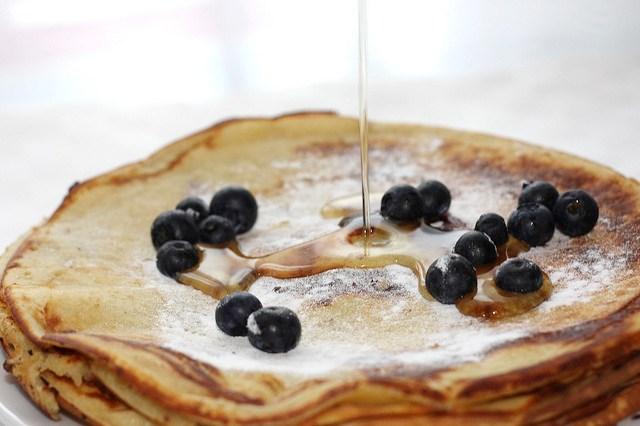An extract that has shown the potential to reduce the amount of antibiotics needed to kill disease-causing bacteria may be sitting in your kitchen cabinet, according to research released today at the annual meeting of the American Chemical Society (ACS).
In a series of in vitro tests and experiments on insect models, a team of researchers at McGill University in Montreal has shown that a phenolic-rich extract from maple syrup—responsible for giving maple syrup its color—has a synergistic effect on commonly used antibiotics, allowing the drugs to permeate bacteria more easily to do their job. By enhancing the effect of the antibiotics, the extract reduced the amount needed to kill bacteria by as much as 97%.
Lead investigator Nathalie Tufenkji, PhD, a professor in the department of chemical engineering at McGill, originally became interested in the antimicrobial potential of maple syrup extract a few years ago. Maple syrup is rich in phenolic compounds, an essential part of the human diet that have also been used in Native American traditional medicine and are reported to have antioxidant and anti-cancer activity. They are formed during the intense heating process used to make commercial maple syrup.
Phenolic compounds can also modify bacterial behavior. Tufenkji theorized that separating these compounds from the water and sugar in maple syrup and concentrating them might yield something with antibacterial value.
Antibiotic activity boosted in insects
While initial experiments showed that the extract alone was harmless against bacteria, Tufenkji and her team found that the extracts were able to synergize with the antibiotics ciprofloxacin and carbenicillin in a way that allowed them to use significantly less of the drugs and still achieve the same "kill effect" in bacteria, Tufenkji told reporters at a press conference.
"Essentially, we found that these phenolic compounds made it easier for antibiotics to get inside the bacteria and get trapped inside the bacteria, so the antibiotics had more of an effect," Tufenkji said.
In vitro experiments demonstrated the synergistic effect of the extract against a variety of bacterial strains, including Escherichia coli, Proteus mirabilis, and Pseudomonas aeruginosa. In addition, the extract worked with the antibiotics to inhibit the formation of biofilms, which are complex communities of bacteria that often have high rates of antibiotic resistance. The results of that research appeared in Applied and Environmental Microbiology in March 2015.
What Tufenkji announced today was that the extract appears to work in insect models as well. Her unpublished research on fruit flies and moth larvae, in which test subjects were given food dosed with bacterial pathogens and antibiotics, showed that insects fared better when treated with a combination of antibiotics and the extract than with antibiotics alone.
"The insects lived significantly longer when they were given a dosage of the maple syrup extract with their antibiotics, in comparison to the insects that had only been given antibiotics to protect them from infections," Tufenkji said.
Tufenkji said her team has identified about 10 key compounds in the extract, with catechol perhaps playing the most important role. But she noted that experiments have indicated that the compounds are most potent when combined.
The extract also appears to attack bacteria in several ways. In addition to making the cell membrane more permeable, it also knocks out multidrug efflux pumps—proteins that push antibiotics and other toxins out of cells. As a result, Tufenkji thinks the combination of molecules in the extract is greater than its separate parts.
"It's very possible that it's really the different molecules in the extract that have different activities, and together they synergize with antibiotics," she said.
Tufenkji characterized her experiments with the maple syrup extract as "exploratory, pilot-scale research," and said the results on tests in mice models aren't ready to be discussed. The next step is to expand the in vivo studies and explore the extract's potential with other antibiotics and against other types of bacteria.
See also:
Apr 2 ACS press release and abstract
March 2015 Appl Environ Microbiol abstract























